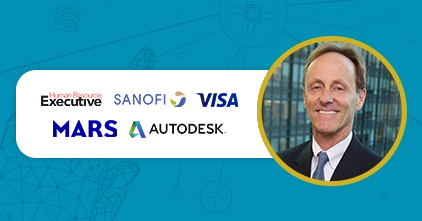As the world of work continues to thrive on data, so should your company training. Learn why data fluency matters for L&D in our latest article.

As employees continue with their training, tons of new information is being generated every day. And thanks to a variety of learning technologies on the market, collecting data is easier than ever.
Now, L&D is tasked to make sense of all of these numbers and figures, requiring them to become data-fluent. Like being fluent in a language, data fluency enables key people in your L&D team to understand and communicate insights about them in a shared language.
But the thing is, many organizations still fail to effectively use their available data. And in today’s data-driven workplace, that’s not good. Here’s why:
L&D’s Newest Challenge: Understanding Data
Above machine learning and real-time analytics, data fluency might be the biggest obstacle to organizations making sense of their data and gaining a long-term competitive edge.
A recent study conducted by The Data Literacy Project found that only “24% of business decision-makers surveyed are fully confident in their ability to read, work with, analyze, and argue with data,” and only “32% of the C-suite is viewed as data literate.”
With this, it seems like a lot of learning leaders already have the data in their hands but can’t seem to utilize them. So instead of using all these stats to drive employees’ learning and the business forward, it all eventually becomes useless.
But when you’re able to take and put all of these to good use, only then can you demonstrate the impact and ROI of your training efforts.
It can help you gauge just how effective your training really is, provide insights into a problem/opportunity, enhance your ability to monitor progress, uncover causes of low performance and create action plans to improve.
So being data-fluent as an HR professional is more important than you think!

How Can I Become Data Fluent?
Having a basic understanding of the goals and concepts of data analysis is an essential skill every L&D professional must have or develop. Because a data-fluent L&D function is more likely to take greater accountability for results and to successfully improve its own performance.
So here are some tips on how you can become data fluent:
Recognize the value of data
The first step to achieving any goal is starting with the why of it all. That means we must understand why it’s important to make use of data in the first place.
Is it to prove the effectiveness of my training efforts? To figure out whether learning is working or not? Or to turn these insights into actions?
Knowing why data is important for you will help you define “effective” for your learning programs and determine how to measure that effectiveness. Only then do you know what data to look for.
Know your data and where it comes from
To have data fluency means that we know where the data comes from, and as a result, we can process, interpret, infer, and apply data effectively.
And because tremendous amounts of data can be quite overwhelming, much of it can go unused or unanalyzed when you don’t know where to start and pick out what really matters.
This is why it’s best to define what learning metrics are meaningful for you and take a look at those, pushing all the noise aside.
For example, if your goal is to show how impactful your language learning program is, then compare your employees’ language proficiency levels before and after training. You can even have managers assess how employees have improved their presentation skills and collaboration within diverse teams all thanks to your training.

Analyze data meaningfully
Now that you know what your goal is and what data can support that, it’s time to start analyzing data in a meaningful way. This means drawing more information about what’s in front of you so that in the end, it can help you make informed decisions.
Continuing our example from the previous section, you can further maximize data by asking the “hows” of an employee’s language proficiency and success.
How did language training ultimately help close deals with clients? It could be because they’ve accessed high-impact business resources on their learning platform. How did language training help employees take on more challenging roles? Maybe because their language training increased their ability to work better within diverse teams and communicate with customers.
When you have the “hows” in mind, you can easily check and correlate data with results and see where those connections lie. So that’s a way you can interpret your data in a way that aligns training with your business goals and L&D objectives.
Turn these insights into actions
Ultimately, data should help you make improvements and solve problems. Because learning programs aren’t just a one-and-done design-and-implement thing. Just like a person, it should always have room for improvement.
And data is what can guide you to make decisions because you now have a concrete means to clearly see whether training is succeeding or not.
Using our example again, you can refine your language learning program by basing decisions on insights from the data collected. Since you know that business topics are frequently accessed by learners, you continue to add more work- and industry-related resources. You can also decide what content to lessen or remove entirely. Say, content that talks about how to cook a certain dish that isn’t really related to the company’s learning goals.
Taking it up a notch, you can even tie data with business goals. So if for example, your employees have regular speaking opportunities with colleagues from Spain, you can start introducing more Spanish language learning materials to them.
Conclusion
Are you ready to take your data skills to the next level? Now’s as good a time as any to start improving your data fluency to help drive the business forward!
Let us know in the comments how you interpret your company’s learning data.


